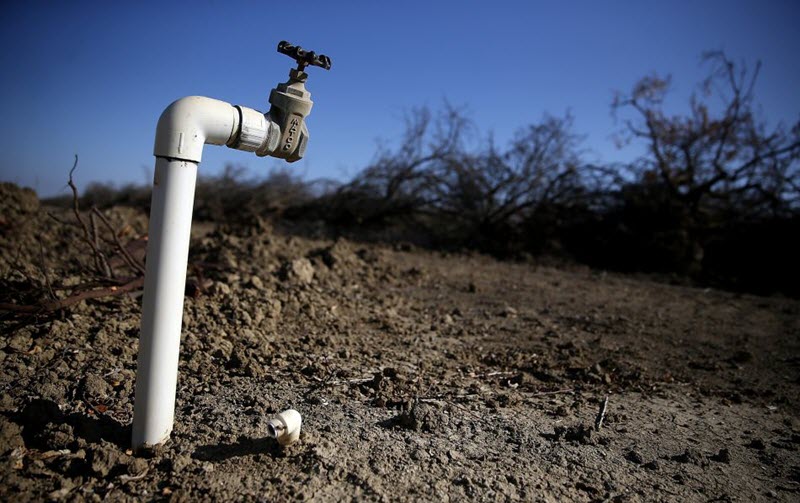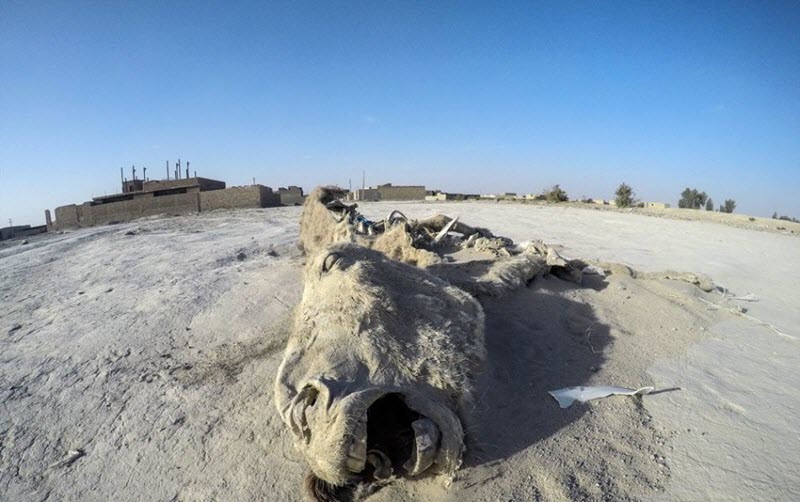
By Staff Writer
A number of violent protests had been broken out in past few years
over water related issues in Iran, the epic was a series of protests by
the farmers in Eastern Isfahan, Kerman and also environmentalists in
Khuzestan. It has been evolved to a growing political concern partly due
to droughts, which residents of affected areas and analysts rightly
believe, it has been exacerbated by state officials’ mismanagement. It
is certainly hard to believe but according to Iran’s Meteorological
Organization, approximately 97% of the country is experiencing drought
to some degree.
Today, water is considered one of the fundamental keys of
development, economic prosperity, and social well-being. Its shortage
will create many limitations. Water shortages, directly and indirectly,
affect many aspects of life, including the control of water storage and
its supply, distribution types, transmission, productivity factor,
planning, conservation management and more. In this regard, construction
of large and small dams will be considered on rivers, along with
related irrigation networks in different countries to take advantage of
their water resources to meet the needs and objectives of the society,
such as drinking, agriculture, industry and generating power.

Water has been the key natural-resource during the three millennia of
recorded history in the Middle East. Some regions of the world are
drier, and others have higher populations or larger economies, but no
other region of the world embraces such a large area, with so many
people striving so hard for economic growth, with such little water. In
the Middle East region, water is one of the most valuable and vulnerable
natural resources. Water shortage and the increased demand associated
with uncontrolled development, intensive agriculture, mass tourism,
overpopulation and over-consumption results in a complexity of
interrelated problems affecting social, economic and natural aspects of
everyday life.
Iran’s fresh water supplies are now under unsustainable strains.
Ninety percent of the country is arid or semi-arid, and an estimated
two-thirds of its rainfall evaporates before it can replenish ground
water or rivers. As a result, Iran provides more than half of its water
needs by drawing from underground aquifers, but public usage is rapidly
draining the subterranean reservoirs. At current rates of overuse,
provinces in central parts will exhaust their groundwater reserves very
soon. Iran’s water problems now risk undermining the national economy.
The agricultural sector produces 10 percent of Iran’s GDP and employs a
quarter of the labor force. It also supports national food security, a
top priority since the 1979 revolution under a fake slogan was carried
out in the name of “the oppressed.” Indeed, Tehran used to subsidize
producers and consumers alike in a dual strategy to promote
self-sufficiency in staple crops by bolstering both supply and demand.
Yet Iran’s food security is now imperiled because agriculture accounts
for more than 92% of the country’s water use, but only produces about
66% of the food supplies for its more than 80 million people. Tehran has
to import the rest. The intensifying “water stress” threatens to
further sap agricultural output, increase import bills and aggravate
fiscal burdens. Agricultural demands are even subverting food security.
Some areas, such as the central Kashan plain, have been rendered unfit
for farming because of soil salinity, as groundwater overdrafts sink
water tables.

While the mean annual precipitation (MAP) of the planet Earth is 860
mm, it is only about 250 mm in Iran, which comprises 1.1% of the
continental areas. Iran’s MAP ranges from 2000 mm near the Talesh City
in the North to less than 50 mm in the Central Desert. The rainy period
in most of the country is from November to May. There is no rain in most
of the country between May and October. About 90% of the total
precipitation occurs in cold and humid seasons and in northern and
western parts of the country, and only 10% occurs in warm and dry
seasons in central, southern and eastern parts. About 52% of
precipitation occurs in 25% of the area of the country; hence, some
parts of the land suffer from lack of precipitations, and an imminent
water crisis in the near future is of certainty. Groundwater supplies
cover about 60% of the national consumption in years with “normal”
precipitation, and undoubtedly a larger percentage during prolonged
drought, as the one, country is experiencing now. Occurrence of
recurrent and prolonged droughts and torrential rains in many areas of
Iran is a rule rather than exception; flash floods are the natural
consequence of such events. This natural setting forced our pragmatic
ancestors to invent the Qanat, water resource management par excellence.
For us, Iran is the land of droughts, floods, and Qantas.

Due to high evaporation of surface water, Iranians have, for
centuries, used traditional methods of water transport and access to
supply their freshwater resources. More than 2000 years old, the Qanat
is still used in Iran today and is designed to access and transfer
groundwater without the use of lifting devices. Some of these unique
systems are unfortunately dried out due to improper and corrupt
governance vision. Wells are sunk every 20 to 50 meters along the
system, with a tunnel then built to link the wells on a gradient from
higher ground. Groundwater flows naturally down the tunnel till it
reaches a surface point at the end, either in a town or city, or by
creating an artificial desert oasis.

With above introduction in mind, experts are pointing out various
factors for the foreseeable water crisis in Iran. Great majority of them
are placing emphasis on the lack of foresight and mismanagement of the
country’s political decision makers and water managers. Some are
emphasizing the ratios of demand and supply. The same authors are
describing other factors, such as increase in population, drought, and
climate change. A lengthy list of factors, all of which are contributing
factors for water crisis in Iran.
Iran has had a long history of effective and sustainable water
resource management under arid and semi-arid conditions. However, today
the country is faced with serious challenges in the water sector,
including rising water demand and shortages, declining groundwater
levels, deteriorating water quality, and increasing threats to the
environment and various ecosystems. If these issues persist, tragedy
will be the inevitable result. Over the last three decades, tremendous
useless efforts have been made to supply water, primarily an extensive
program of development with dam building at the forefront. However, the
process of such massive dam construction was given to IRGC, which have
been performed without fundamental consideration toward the environment
and ecosystems’ welfare. IRGC is a core arm of Iran’s oppression,
exporting of terrorism and a major stakeholder of its economic
activities apparatus.

A careful review of various water related literatures and analyses,
one could arrive at conclusion that Iran’s water crisis is indeed
government made or in exact terms, a man-made disaster. After the
revolution in 1979, the Iranian regime had worked in many fronts against
the conventional wisdom of governance. Regime’s authorities in every
level advocated for having more children, producing more grain and meat
to become food self-sufficient without having any knowledge of farming
processes, draining the country of educated manpower and intellectuals
forcing them into exile, added the most opportunistic illiterate layer
of society to the government’s circle. The seeds that the fundamentalist
totalitarian regime sewed, it now is harvesting.
Construction of large dams couldn’t be entirely rejected. However,
this folly of irregular dam building by the IRGC in Iran for certain
profits of the ruling class has been destructive. Construction of a dam
requires fundamental research in all aspects of social, environmental,
geological, seismological, biological and more factors of an ecosystem.
Additionally, its cost and benefits must be reviewed in great detail.
Another serious issue that must be resolved prior to construction is the
matter of soil conservation practices and watershed management of
upstream and downstream. All questions must be answered and arguments
expressed to the satisfaction of experts and the public. If the argument
is for generating hydro-power, then it must be completely rejected in
case of Iran. The reason would be the availability of other less costly
resources, such as sun, wind, geothermal and fossil.
Well, if one attempts to sum up the regime’s efforts toward
environment, soil conservation, watershed management, erosion control,
preservation of forests, management of rangelands, water resources
management and Iran’s natural ecosystem, one will arrive at word
“disastrous” only. Its committed crime toward environment, which takes
serious work of many generations to overcome. This harsh fact is not
only an Iranian problem but it is an international one.




هیچ نظری موجود نیست:
ارسال یک نظر